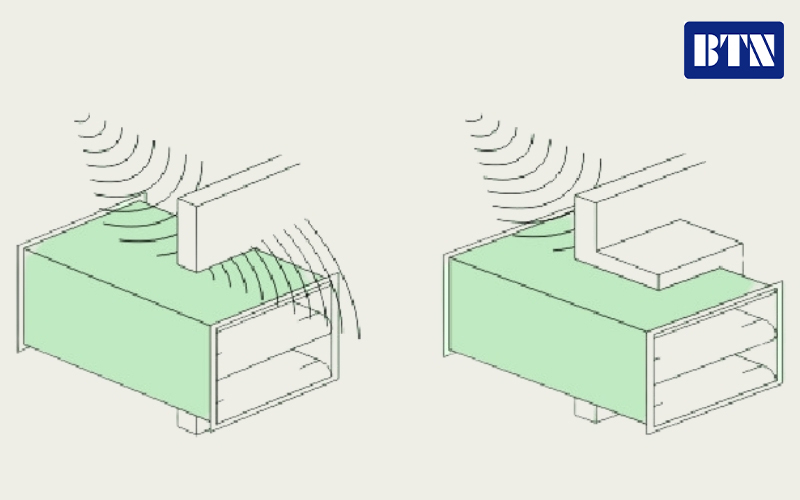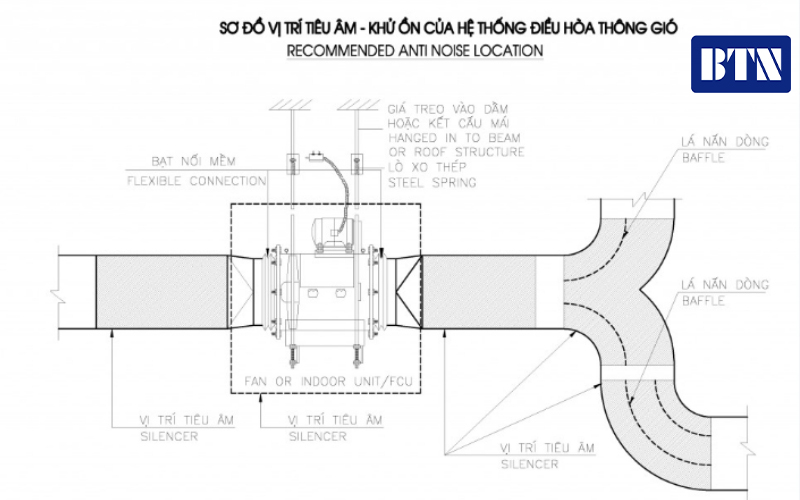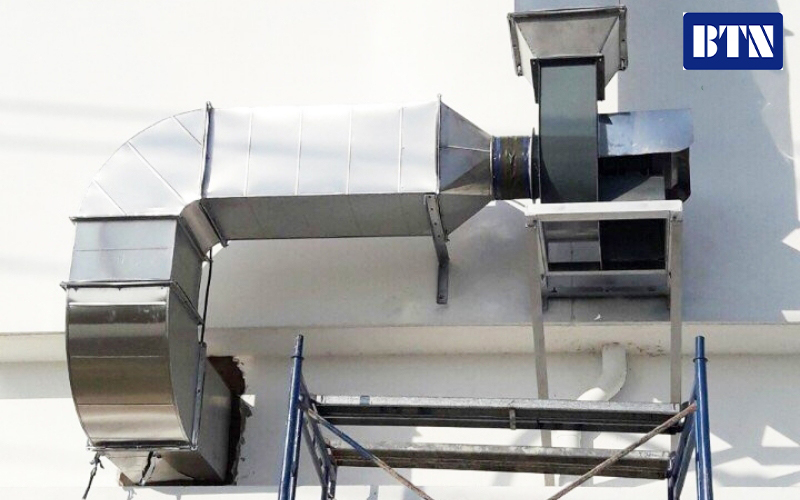News
TYPES OF SOUND ABSORPTION FOAM FOR AIR DUCT
There are many sound absorption methods on the market today to reduce noise from ventilation systems. With good sound absorption ability in high and medium frequency ranges and improving the quality of the working environment, sound absorption foam is a much more popular material used in ventilation systems.
What is duct sound absorbing foam?
Duct sound absorption foam is usually made from insulating foam or mineral wool, which is an extremely important material in the production of duct sound absorption to limit noise emitted from the ventilation system including: fans, motors or air flow moving in the pipe.
Normally, sound absorbing foam is used to line the inside of square or round ducts to absorb sound, reduce noise and create a quieter and more comfortable working and living environment.

See more: SOUND ABSORPTION AIR DUCT – EFFECTIVE NOISE REDUCTION SOLUTION
Types of sound absorbing duct foam
There are many different types of duct sound absorbing foam on the market today, each with its own advantages and characteristics suitable for each usage need. Below are some popular types of sound absorbing foam:
Mineral wool sound absorbing foam
Sound absorbing mineral wool is a material made from natural mineral fibers with a slightly rough surface, but it has the ability to absorb sound, insulate well and is very environmentally friendly. For convenience in transportation and construction, sound absorbing mineral wool is produced in many shapes such as rolls, tubes and panels.
Advantage
- Good sound and heat insulation
- Withstands temperatures up to 850 degrees C
- Variety of designs and colors
- Installation is easy, quick and doesn’t take too much time.
- Cheap price, suitable for most projects
Foam rubber sound absorbing foam
Egg foam
Egg foam has a round surface structure quite similar to an egg, so it is also known as sound-absorbing egg foam. This is the most commonly used type of foam today because it is made from PE Foam – a light, porous material with high mechanical strength. This type of egg foam has the effect of absorbing sound and absorbing sound well, especially for mid-range (Mid) and Treble (also known as HI) sounds.
Advantage
- Cheap price
- Easy to construct and install
- Sound absorption capacity in many sound ranges with intensity from 0.8Hz to 1.05Hz
- Unique design, impressive space decoration
- The concave-convex surface of the spherical shape helps increase the ability to absorb sound from all angles.
- Foam rubber is environmentally friendly, safe for human health and can be recycled.
Pyramid foam
Pyramid sound-absorbing foam has the same structure as other sound-absorbing foam, however, the design of this sound-absorbing foam has a unique pyramid shape, like a small pyramid. This material has a better sound-absorbing effect than flat sheet materials.
Advantage
- High sound insulation and noise blocking ability
- High safety, heat resistance and good fire resistance
- High flexibility, easy to cut and adjust to the size of the duct
- Foam surface, tough and resistant to external impacts
Applications of sound absorbing foam in ventilation systems
Ventilation systems in residential buildings
Duct sound absorbing foam is installed inside the duct or fan to absorb the vibration sound created by these devices, thereby providing a quiet, comfortable space and protecting hearing, especially for children and the elderly.

Air conditioning system in office building
Noise from air conditioning systems can affect employee concentration and work efficiency. Duct sound absorption foam is used to reduce noise from evaporators, fans and other parts of the air conditioning system, creating a quiet working environment, contributing to improving labor productivity.
Ventilation system in industrial zone
In factories, workshops, manufacturing facilities and other industrial buildings, air conditioning systems are often used to control temperature and humidity. Duct acoustic foam is used to reduce noise emitted from these systems, helping to create a safer and more comfortable working environment for employees.

Ventilation systems in hospitals and laboratories
In healthcare facilities, noise reduction in operating rooms and patient care rooms is important to help patients and staff feel comfortable and focus on their work. Duct acoustic foam is used to reduce noise emitted from ventilation systems in such areas.

